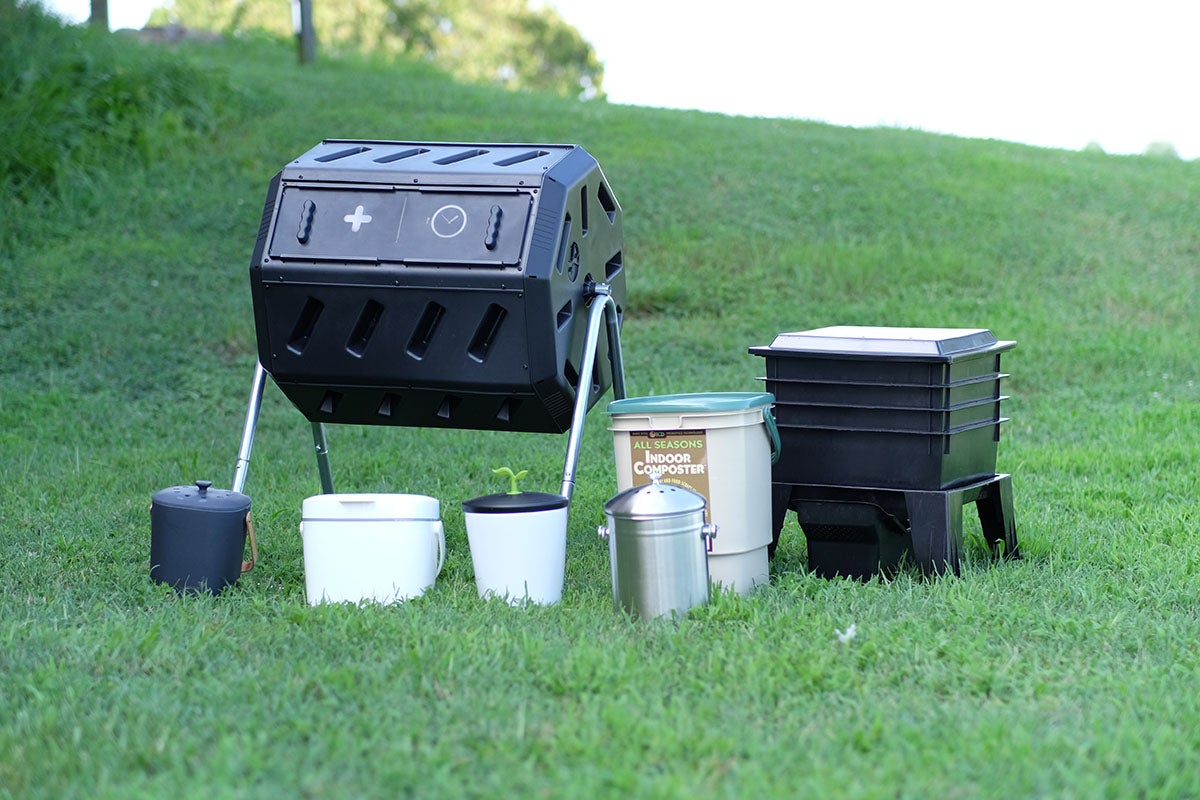Home>Gardening Basics>Getting Started>How Much To Charge For Planting


Getting Started
How Much To Charge For Planting
Modified: January 22, 2024
Learn how to determine the right pricing for your planting services. Get started with our step-by-step guide on getting started and setting fair rates.
(Many of the links in this article redirect to a specific reviewed product. Your purchase of these products through affiliate links helps to generate commission for Chicagolandgardening.com, at no extra cost. Learn more)
Table of Contents
Introduction
When it comes to offering services as a plant-planting professional, one important aspect to consider is how much to charge for your services. Determining the right pricing strategy is crucial to ensure that you are both competitive in the market and able to generate a profitable income.
Setting your rates requires a careful analysis of several factors, including your expenses, the market rates in your area, and the value you provide to your clients. By taking the time to research and consider these factors, you can establish a fair and competitive pricing structure that reflects the quality of your work and the value you bring to your customers.
In this article, we will explore the key factors to consider when determining how much to charge for planting services. We will discuss how to research market rates, calculate your expenses, and determine your desired income. Additionally, we will delve into effective pricing strategies and the importance of balancing competitiveness and profitability. Lastly, we will explore the concept of value-added services and the role they can play in differentiating yourself from competitors.
Whether you are just starting out in the plant-planting business or are looking to adjust your pricing strategy to better align with market trends, this article will provide you with valuable insights and guidance.
Factors to Consider
When determining how much to charge for planting services, it is important to consider several key factors that will help you establish a fair and competitive pricing structure. These factors will ensure that you are able to cover your expenses, generate a profit, and provide value to your clients. Let’s take a closer look at these factors:
- Experience and Expertise: Your level of experience and expertise in the field of plant planting can influence the rate you charge. If you have extensive knowledge and a track record of successful projects, you may be able to command higher rates compared to someone who is just starting out.
- Geographical Location: The location of your business can impact pricing. Different areas may have varying costs of living and different market rates for plant-planting services. Research the local market to understand the average rates charged by your competitors.
- Type of Plants: The type of plants you work with can also affect your pricing. Some plants may require more specialized care or maintenance, which may increase the time and effort required for planting. Take into account the cost of purchasing and caring for different types of plants when determining your rates.
- Time and Effort: Consider the amount of time and effort it takes to complete a planting project. Factors such as site preparation, soil testing, and ongoing maintenance should be factored into your pricing structure.
- Equipment and Materials: Take into account the cost of necessary equipment and materials for planting. This includes items such as tools, fertilizers, soil amendments, and containers. Ensure that your pricing reflects the investment you have made in acquiring these resources.
- Overhead Expenses: Don’t forget to factor in your overhead expenses, such as insurance, transportation costs, marketing expenses, and business licenses. These costs need to be covered to ensure the profitability of your business.
By carefully considering these factors, you can establish a pricing structure that takes into account all relevant costs and ensures that you are able to deliver high-quality services to your clients while maintaining a profitable business.
Researching Market Rates
Researching market rates is a crucial step in determining how much to charge for your planting services. It helps you understand the competitive landscape and ensures that your pricing is in line with industry standards. Here are some steps you can take to research market rates effectively:
- Look at Local Competitors: Start by identifying other plant-planting professionals in your area. Look at their websites, social media profiles, and advertisements to gather information about the services they offer and their pricing structure. This will give you a good sense of the market rates in your locality.
- Reach Out to Industry Associations: Industry associations and trade organizations can provide valuable insights into market rates. They often conduct surveys or offer resources that can help you understand pricing trends and benchmarks in the industry. Joining these associations can also provide networking opportunities and access to additional resources.
- Utilize Online Research: Take advantage of online resources to gather information on market rates. Explore websites, forums, and online communities where professionals in the planting industry discuss pricing and share their experiences. Take note of any common pricing ranges or factors that influence rates.
- Network with Peers: Attend industry events, conferences, and workshops to connect with other professionals in the field. Engaging in conversations with peers can provide valuable insights into market rates and industry trends. Sharing information and experiences can help both parties stay competitive and informed about pricing strategies.
- Consider Regional Variations: Keep in mind that market rates may vary based on geographical location. Factors such as cost of living, demand for services, and local economic conditions can influence pricing. Take these regional variations into account when setting your rates.
By conducting thorough research on market rates, you can ensure that your pricing is competitive and aligned with industry standards. It allows you to position your services appropriately in the market and attract customers who are willing to pay for the value you provide.
Calculating Expenses
Understanding your expenses is essential when determining how much to charge for your planting services. By accurately calculating your costs, you can ensure that your pricing covers all necessary expenses and allows you to maintain a profitable business. Here are some key expenses to consider:
- Materials and Supplies: Calculate the cost of the necessary materials and supplies for planting, such as plants, soil, fertilizers, containers, and other related products. Consider the quantity needed for each project and the cost per unit.
- Equipment Costs: Take into account the cost of purchasing or maintaining equipment required for planting, such as gardening tools, landscaping machinery, and irrigation systems. Include any costs for repairs or replacements as well.
- Labor Expenses: Calculate labor expenses, including wages or salaries for yourself and any employees or subcontractors involved in planting projects. Consider the amount of time spent on each project and the associated labor costs.
- Transportation: Determine the costs of transportation, including fuel expenses, vehicle maintenance, and insurance. If you need to travel to clients’ locations or purchase plants from suppliers, include these costs in your calculations.
- Overhead Costs: Account for overhead expenses such as rent, utilities, office supplies, insurance, and marketing expenses. These costs are necessary to run your business and should be factored into your pricing.
- Professional Development: Consider any costs associated with professional development and training to enhance your skills and stay updated with industry trends. These expenses contribute to your expertise and should be included in your overall costs.
Once you have calculated these expenses, you can determine how much to allocate to each planting project in order to cover costs and generate a profit. Additionally, reviewing your expenses regularly allows you to identify areas where you can potentially reduce costs or increase efficiency, maximizing your profitability.
Determining Your Desired Income
When establishing how much to charge for your planting services, it is essential to consider your desired income. Your desired income reflects the level of profit you aim to achieve and is a key component in setting your pricing structure. Here are some steps to help you determine your desired income:
- Evaluate Your Financial Goals: Consider your personal and business financial goals. Determine the income you need to cover your personal expenses, invest in your business, and achieve your financial objectives. Take into account factors such as your living costs, savings goals, and future business growth.
- Assess Your Market Positioning: Reflect on your expertise, experience, and the value you bring to your clients. If you offer unique or specialized services, you may be able to charge a premium. Consider the positioning of your business and the market you serve.
- Factor in Business Expenses: Take into account your calculated expenses, including materials, equipment, labor, and overhead costs. Ensure that your desired income covers these expenses while leaving room for profit.
- Research Industry Averages: Look into industry averages to get an idea of what other professionals in your field are earning. This can provide a benchmark for setting your desired income. Keep in mind that these averages vary depending on factors such as location and experience level.
- Consider Your Work-Life Balance: Balancing your income goals with your desired work-life balance is important. Consider the number of hours you want to work, the number of projects you can handle, and the income required to achieve your desired lifestyle.
By taking these steps, you can determine your desired income and set your pricing accordingly. It is important to strike a balance between achieving your financial goals and remaining competitive in the market. Remember that your desired income may evolve over time as your business grows and adjusts to market conditions.
Pricing Strategies
Choosing the right pricing strategy is crucial when determining how much to charge for your planting services. Your pricing strategy should align with your business goals, reflect the value you provide, and be competitive in the market. Consider the following pricing strategies to help guide your decision:
- Market-based Pricing: Set your prices based on market rates in your area. Conduct thorough research to understand what other professionals are charging for similar services. Pricing within the same range can help position your business competitively while still maintaining profitability.
- Value-based Pricing: Determine your prices based on the value you provide to your clients. Consider factors such as your expertise, unique services, and customer satisfaction. If you offer specialized knowledge or exceptional customer service, you may be able to charge higher rates.
- Cost-plus Pricing: Set your prices by adding a predetermined profit margin to your calculated expenses. This strategy ensures that all your costs are covered and allows for a reasonable profit based on your desired income.
- Tiered Pricing: Offer different pricing tiers that cater to various customer segments. This allows you to appeal to a wider range of clients, offering different levels of service and customization at different price points.
- Bundling: Package your services together and offer bundled pricing. This can incentivize clients to choose your services over individual options and potentially increase the overall value of each transaction.
- Promotional Pricing: Temporarily offer discounted rates or promotions to attract new customers or encourage repeat business. Be cautious when using this strategy, ensuring that it does not devalue your services in the long run.
It is important to experiment with different pricing strategies and assess their effectiveness in achieving your business goals. Regularly review and adjust your prices as needed to remain competitive and profitable in the market.
Balancing Competitiveness and Profitability
When determining how much to charge for your planting services, it is crucial to strike a balance between competitiveness and profitability. While it is important to offer competitive rates to attract clients, you also need to ensure that your prices cover your expenses and generate a profit. Here are some strategies to help you achieve this balance:
- Know Your Market: Understand the market demand for plant-planting services in your area. Research local competitors and their pricing strategies to gauge what clients are willing to pay. Find a price point that positions you as competitive while allowing for profitability.
- Differentiate Your Services: Highlight the unique value you bring to the table. Emphasize your expertise, experience, and any specialized services you offer. Communicate how your services differ from competitors’ and why clients should choose you, even if your prices may be slightly higher.
- Consider Value-Added Services: Identify additional services or offerings you can provide to justify higher prices. This could include personalized consultations, ongoing maintenance packages, or educational resources for clients. These value-added services can justify a premium price point.
- Review and Adjust Prices Regularly: Regularly assess the effectiveness of your pricing strategy. Monitor market trends, changes in expenses, and customer feedback. Adjust your prices accordingly to stay competitive and maintain profitability.
- Sustain Long-Term Relationships: Building strong, long-term relationships with clients can be more profitable than continually acquiring new customers. Focus on delivering exceptional service, exceeding expectations, and nurturing client relationships. This can lead to repeat business and positive referrals, allowing for higher prices.
- Monitor and Control Costs: Continually evaluate your expenses and look for ways to minimize costs without compromising the quality of your services. Efficiently manage materials, equipment, and labor to optimize profitability.
Remember that finding the right balance between competitiveness and profitability may require some trial and error. It is important to closely monitor the market, understand your expenses, and regularly review your pricing strategy to ensure it aligns with your business goals and maintains a healthy bottom line.
Considering Value-added Services
When determining how much to charge for your planting services, it is essential to consider the potential value-added services you can offer to differentiate yourself from competitors and justify higher prices. Value-added services provide additional benefits to your clients and can contribute to increased customer satisfaction and loyalty. Here are some considerations for implementing value-added services:
- Personalized Consultations: Offer personalized consultations to assess clients’ needs and provide tailored recommendations. This additional service can help clients make informed decisions and feel confident in their choice to work with you.
- Ongoing Maintenance Packages: Provide ongoing maintenance packages to ensure the long-term health and vitality of the plants you have planted. This can include regular visits for pruning, fertilization, and pest control, giving clients peace of mind and saving them time and effort in caring for their plants.
- Education and Workshops: Organize educational workshops or provide educational resources on planting techniques, plant care, and landscaping design. Sharing your knowledge and expertise can enhance the perceived value of your services and position you as an industry expert.
- Landscape Design Services: Expand your offerings to include landscaping design services. By providing comprehensive solutions that incorporate planting, hardscaping, and outdoor living spaces, you can offer a complete package that adds value and increases your earning potential.
- Sustainability Initiatives: Emphasize your commitment to sustainability by promoting eco-friendly practices and offering options for environmentally conscious planting solutions. This can attract clients who prioritize sustainability and are willing to pay a premium for eco-friendly services.
- Exclusive Access to Plant Varieties: Partner with local nurseries or plant suppliers to offer clients exclusive access to unique or hard-to-find plant varieties. This exclusivity can differentiate your services and justify higher prices for the rarity and quality of the plants you provide.
By incorporating value-added services into your planting offerings, you can enhance the overall customer experience and justify charging higher prices. These additional services not only add value but also differentiate your business from competitors, attract a higher-end clientele, and contribute to long-term customer satisfaction and loyalty.
Negotiating Rates
When it comes to determining how much to charge for your planting services, it’s important to be open to negotiation with clients. Negotiation allows you to tailor your rates to meet the specific needs and budgets of your clients while still ensuring profitability for your business. Here are some strategies to consider when negotiating rates:
- Understand Client Expectations: Before entering into rate negotiations, make sure you have a clear understanding of your client’s expectations and requirements. This will enable you to propose a rate that aligns with the scope of work involved.
- Know Your Bottom Line: Determine the lowest rate you are willing to accept for your services while still keeping your business profitable. This will serve as a guideline during negotiations and help you maintain your desired income level.
- Highlight Value and Expertise: Emphasize the value and expertise you bring to the project. Clearly communicate the unique qualities that set you apart from competitors and justify your pricing.
- Consider Trade-offs: If a client requests a lower rate, consider whether there are any trade-offs you can make without sacrificing the quality of your services. For example, you could offer a reduced rate for a larger project or for signing a long-term service agreement.
- Explore Add-on Services: If a client is hesitant about your rates, propose additional services or options that can be included to provide more value. This could be something like additional consultations, ongoing maintenance, or special plant varieties.
- Be Flexible: Approach negotiations with a flexible mindset. Consider alternative pricing structures, such as hourly rates or project-based fees, that may better suit the client’s budget or specific requirements.
- Build Relationships: Focus on building strong relationships with clients. Provide excellent service, go above and beyond their expectations, and cultivate trust. Satisfied clients are more likely to accept your rates without extensive negotiation.
Remember, negotiation is a two-way process, and it should be approached with the goal of finding a mutually beneficial agreement. Be open to discussion, understand the client’s perspective, and be willing to make adjustments while still maintaining the profitability of your business.
Reviewing and Adjusting Prices
Continuously reviewing and adjusting your prices is a vital aspect of running a successful planting services business. Market conditions, expenses, and client demand can change over time, making it necessary to regularly assess and update your pricing strategy. Here are some key considerations when reviewing and adjusting your prices:
- Monitor Market Trends: Stay updated on industry trends and changes in market rates. Keep an eye on what your competitors are charging and take note of any shifts in customer preferences or industry standards. Stay proactive and adjust your prices accordingly.
- Track Expenses: Continuously monitor and analyze your expenses to ensure that your current pricing structure covers costs and maintains profitability. This includes considering any changes in the cost of materials, equipment, labor, overheads, or other relevant factors.
- Solicit Customer Feedback: Regularly seek feedback from your clients to gauge their satisfaction and assess whether your pricing aligns with their perceived value. Customer feedback can reveal how competitive your rates are and if adjustments are needed to better meet their expectations.
- Review Profitability: Regularly review your financial statements to assess the overall profitability of your business. Look at factors such as revenue, expenses, and profit margins. If you find that your current pricing is not generating the desired profits, consider making adjustments to improve your profitability.
- Consider Seasonal Variations: Take into account seasonal variations that can impact demand for your services. Some seasons may be busier than others, and adjusting your pricing accordingly can help maximize your revenue during peak periods while still remaining competitive during slower times.
- Revisit Value-added Services: If you offer value-added services, periodically assess their impact on your pricing structure. Evaluate the cost-benefit balance of these services and determine if any adjustments need to be made to better align with their value to clients.
- Communicate Price Adjustments: When making price adjustments, effectively communicate the reasons for the changes to your clients. Explain any improvements or added value they can expect from your services to help them understand the justification for the adjusted rates.
Regularly reviewing and adjusting your prices ensures that you remain competitive, profitable, and able to meet the changing needs and expectations of your clients. By staying proactive and responsive to market dynamics and customer feedback, you can make informed decisions about your pricing strategy and maintain a successful planting services business.








